Dental waste disposal
Save on commercial waste collection quotes today
Just enter your postcode…
Save on commercial waste collection quotes today
Just enter your postcode…
Start saving now
Compare the latest dental waste collection services and benefit from:

Save money by comparing waste service providers to find competitive rates and flexible services tailored to your needs.
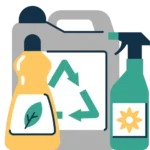
Specific hazardous waste solutions to ensure your amalgam and gypsum-based waste is disposed of responsibly and legally.

Assess different waste collection providers’ reputations and track records to ensure reliable and high-quality service delivery.
Effective dental waste management is essential for both environmental safety and regulatory compliance.
This section covers key strategies for properly collecting and disposing of dental waste, ensuring that every type of waste is managed efficiently and responsibly.
Learn how to streamline your waste disposal processes and improve your practice’s environmental impact.
We will cover the following subjects in detail:
Navigate the complexities of dental waste streams with this essential guide.
Discover effective strategies for identifying, segregating, and managing the diverse types of waste generated in dental practices, from sharps to amalgam, ensuring compliance and environmental stewardship.

Amalgam waste in dental practices consists of excess or spent dental amalgam, a material used for fillings that contain mercury along with other metals such as silver, tin, and copper.
Amalgam waste includes used amalgam capsules, extracted teeth with amalgam fillings, and amalgam particles captured by chairside traps and vacuum filters, all of which require careful handling and disposal to prevent mercury pollution.

Sharps waste in dental practices includes any medical waste items that can puncture or slice skin, containing or potentially contaminated with pathogens that can cause infection.
This includes used needles, scalpel blades, and broken glass from medications, which must be disposed of in sharps disposal containers to prevent injury and cross-contamination.

Gypsum-based waste in dental practices is derived from gypsum products used in making dental moulds and casts, primarily composed of calcium sulfate.
Usually produced is discarded or excess dental stone and plaster used for creating precise dental impressions and models, which need careful disposal to prevent the release of hydrogen sulfide gas in landfills.
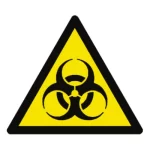
Hazardous waste in dental practices includes any waste that poses a potential risk to health or the environment, often containing toxic or harmful substances.
This includes spent fixer solutions containing silver from X-ray processes, amalgam capsules containing mercury, and certain disinfectants requiring special disposal methods to prevent environmental contamination.

General waste in dental practices consists of non-clinical, non-hazardous materials similar to household waste, such as office paper, magazines, and kitchen waste from staff areas.
These items, which do not pose any risk of infection or contamination, can be disposed of in the same manner as regular domestic trash.

Dental plaster waste refers to the remnants and debris from the use of plaster in dental mould making and casting, primarily composed of gypsum.
The excess plaster is trimmed away when dental technicians shape moulds for making crowns, bridges, and orthodontic appliances – all of which require proper disposal to avoid creating hazardous landfill conditions.

Many disposable dental products are made of plastic, including syringe bodies, barriers, and trays. Special attention to recycling programs or reduction initiatives for plastic waste can significantly impact a dental office’s environmental footprint.

Dry mixed recycling in dental practices encompasses non-hazardous materials free from liquids and significant chemical contaminants, such as paper towels and empty product boxes.
These items, including wrapper materials and unused mixing pads, are generally non-infectious and can be disposed of with other readily recycled items.
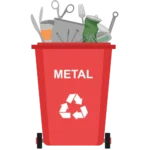
Metal waste in dental practices includes various types of metallic items that are no longer usable, such as dental appliances, tools, and components containing metals like stainless steel and chrome.

Chemical waste in dental practices encompasses a range of substances, including fixer and developer solutions such as radiography, disinfectants, and dental materials such as etchants and composites.
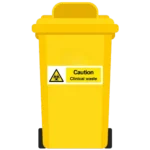
Pharmaceutical waste in dental practices includes expired, unused, or contaminated medications and anaesthetics. These items are generated through routine dental procedures involving pain management and treatment – requiring proper disposal methods.
Explore practical waste minimisation strategies tailored for dental practices.
Our waste experts outline the clear steps to reduce waste, improve sustainability, and ensure regulatory compliance.

Install amalgam separators to capture and recycle dental amalgam, which contains mercury, thus preventing mercury contamination in wastewater. This is important as it’s a legal requirement to have these.

The transition from traditional X-ray films to digital imaging systems eliminates the need for film and associated chemicals (developer and fixer), reducing chemical waste and silver contamination.

Buy frequently used items like prophylaxis paste and fluoride gels in bulk to reduce the amount of packaging waste. Use dispensers for hand soap and surface disinfectant rather than individual packages.

For non-critical and some semi-critical instruments, consider using reusable sterilisation pouches instead of single-use disposable ones.
As of July 1, 2018, the UK adopted the EU Regulation 2017/852 on Mercury, which requires dental facilities to use amalgam separators. These devices must retain at least 95% of amalgam particles to prevent mercury from entering the wastewater system, reflecting a significant push towards reducing environmental mercury pollution.
Dental amalgam is a pressing issue in dental waste management due to its environmental impact and the specific handling requirements it entails.
Here are the key issues dentists face when disposing of dental amalgam:
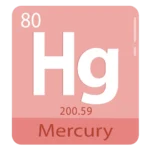
Dental amalgam contains approximately 50% mercury by weight. Mercury is a potent neurotoxin that can accumulate in waterways, affecting aquatic life and entering the food chain.
Improper disposal of amalgam waste can lead to mercury pollution in the environment.

Many regions have strict regulations governing the disposal of mercury-containing materials, including dental amalgam. Dentists must comply with these regulations, which often require specific handling, storage, and disposal procedures to prevent environmental contamination.

To comply with regulatory requirements, dental practices must install amalgam separators in their plumbing systems.
These devices capture amalgam particles from wastewater before they enter the sewage system. The installation and maintenance of these separators can be costly and require regular monitoring to ensure they function correctly.

Once captured, amalgam waste must be collected and recycled by specialised services that can safely recover mercury and other valuable metals like silver, tin, and copper.
Finding reliable and compliant recycling services can be a challenge for some dental practices, especially in less urbanised areas.

Dental staff need thorough training on the proper handling of amalgam waste to prevent spills and ensure that all waste is routed through the amalgam separator system. Developing and maintaining these protocols involves time and resources.

The costs associated with amalgam disposal include the installation and maintenance of amalgam separators, recycling fees, and potential fines for non-compliance. These expenses can be significant, particularly for smaller dental practices.

There is growing public awareness of mercury’s environmental and health impacts. Dentists must not only manage amalgam disposal responsibly but also communicate their practices to patients who are increasingly concerned about environmental issues.